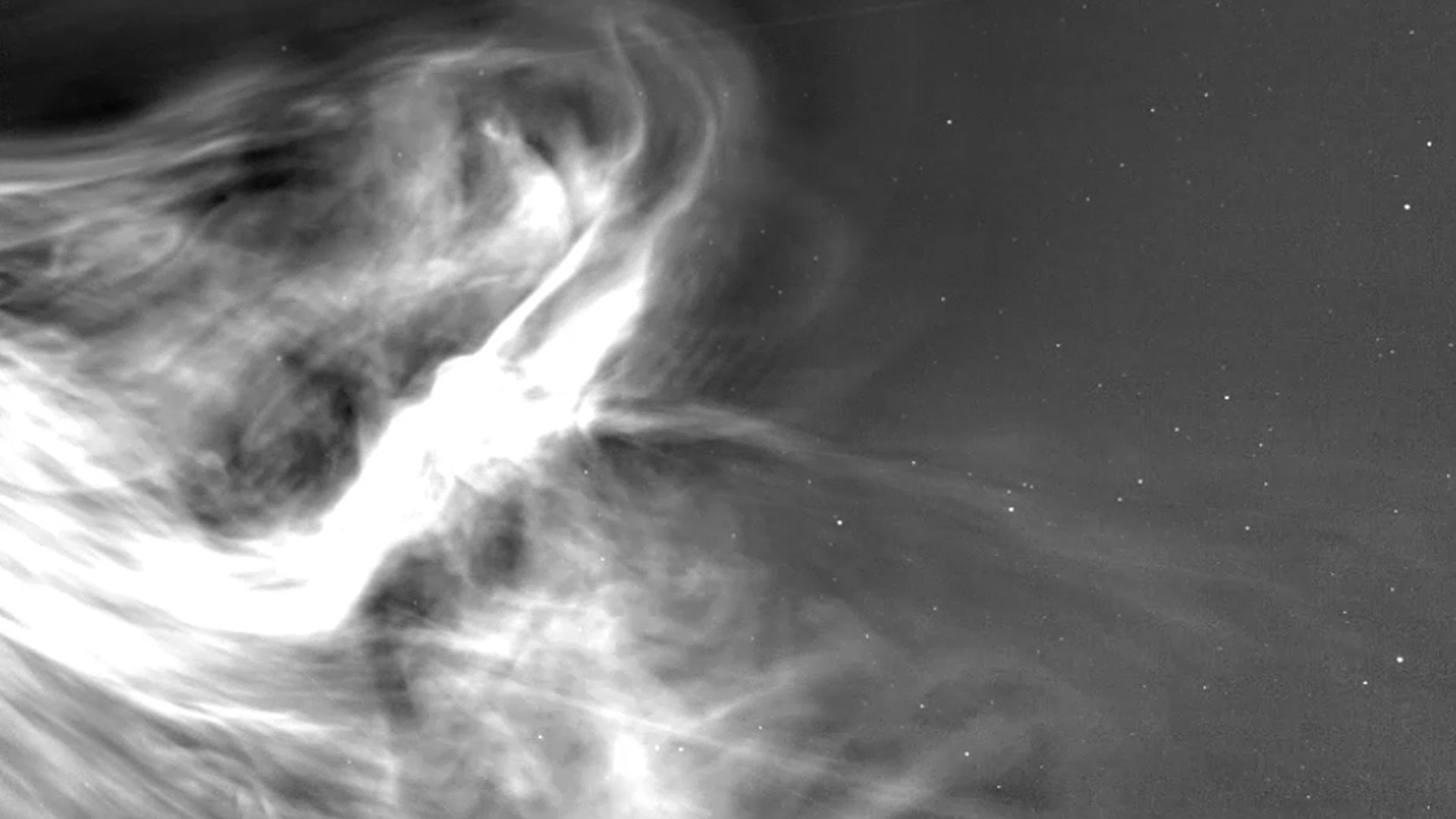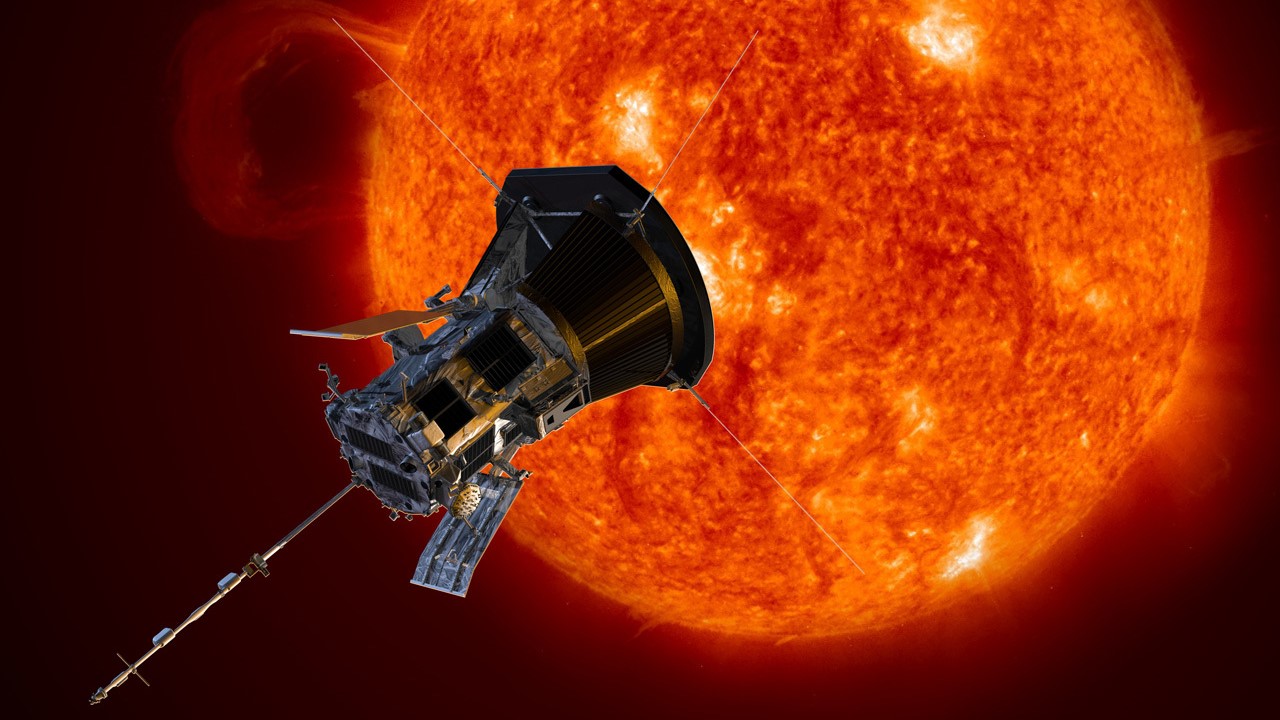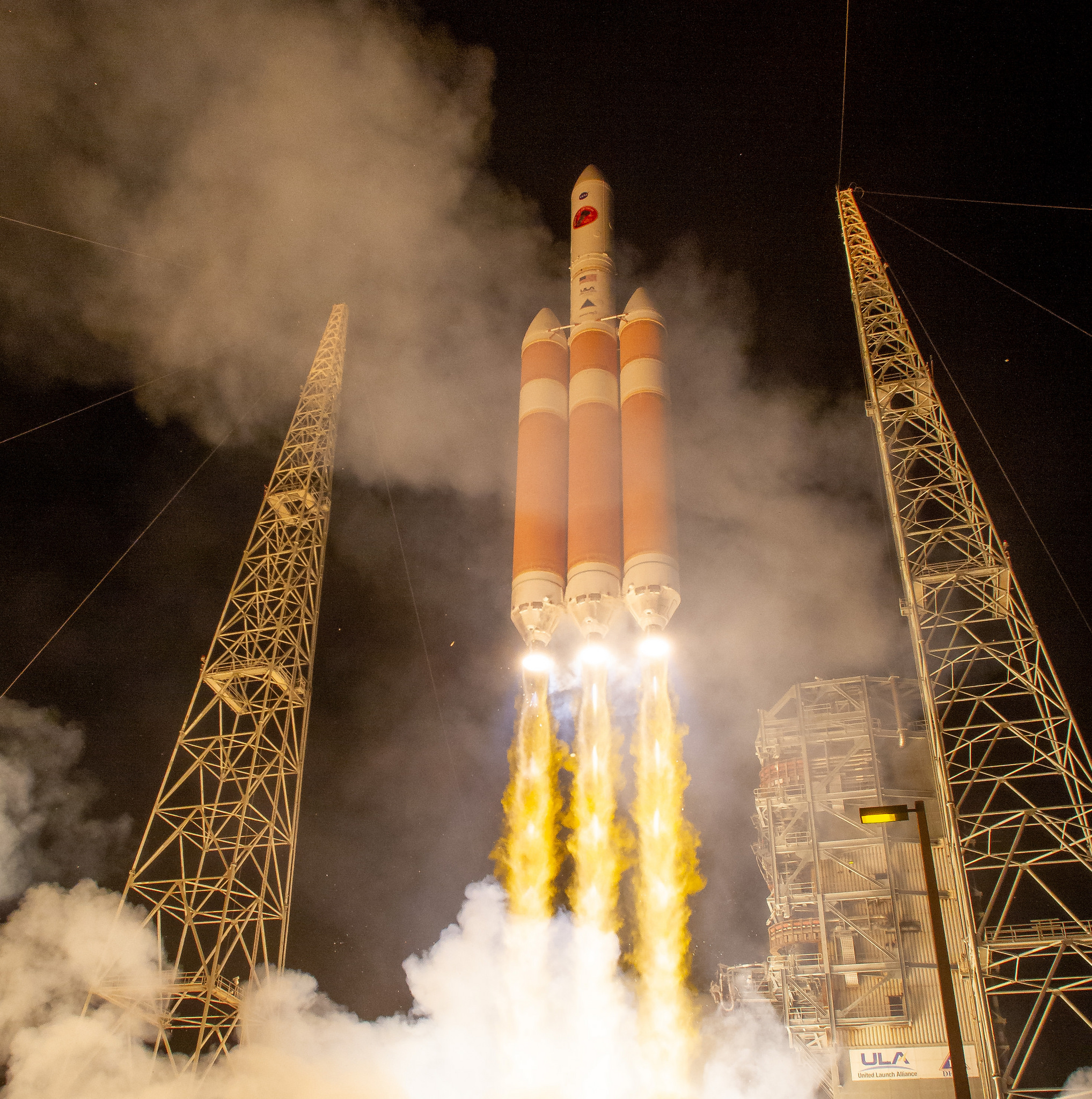NASA’s Parker Solar Probe is no stranger to breaking records.
On Dec. 24, 2024, Parker made history by flying closer to the sun than any spacecraft in history. The probe reached a distance of just 3.8 million miles (6.1 million kilometers) from the solar surface, entering the outermost layer of the sun’s atmosphere, known as the corona. During this flyby, it also reached a top speed of 430,000 miles per hour (690,000 kilometers per hour), breaking its own record as the fastest ever human-made object.
Now, NASA has released remarkable video captured during the historic flyby, offering the closest views of the sun ever recorded. The new images were captured with Parker’s Wide-Field Imager for Solar Probe, or WISPR, revealing a never-before-seen view of the sun’s corona and solar winds shortly after they are released from the corona.

Video not playing?
Some ad blockers can disable our video player.
“Parker Solar Probe has once again transported us into the dynamic atmosphere of our closest star,” said Nicky Fox, associate administrator, Science Mission Directorate at NASA Headquarters in Washington, in a statement accompanying the images. “We are witnessing where space weather threats to Earth begin, with our eyes, not just with models. This new data will help us vastly improve our space weather predictions to ensure the safety of our astronauts and the protection of our technology here on Earth and throughout the solar system.”
WISPR’s images revealed an important boundary in the sun’s atmosphere called the heliospheric current sheet, where the sun’s magnetic field changes direction from north to south. It also captured, for the first time in high resolution, collisions between multiple coronal mass ejections (CMEs), which are major drivers of space weather, and are important in understanding risks to astronauts and technology on Earth such as power grids and communications satellites.
“In these images, we’re seeing the CMEs basically piling up on top of one another,” said Angelos Vourlidas, the WISPR instrument scientist at the Johns Hopkins Applied Physics Laboratory, which designed, built, and operates the spacecraft in Laurel, Maryland. “We’re using this to figure out how the CMEs merge together.”
Before the Parker Solar Probe, NASA and its international partners could only study solar wind from afar, which is why the spacecraft has been instrumental in closing key knowledge gaps. It identified the widespread presence of “switchbacks” — zig-zagging magnetic field patterns — around 14.7 million miles from the sun and linked them to the origins of one of the two main types of solar wind.
Closer in, at just 8 million miles, Parker discovered that the boundary of the sun’s corona is far more uneven and complex than previously believed.
But more remained to be discovered.

“The big unknown has been: how is the solar wind generated, and how does it manage to escape the sun’s immense gravitational pull?” said Nour Rawafi, the project scientist for Parker Solar Probe at the Johns Hopkins Applied Physics Laboratory. “Understanding this continuous flow of particles, particularly the slow solar wind, is a major challenge, especially given the diversity in the properties of these streams — but with Parker Solar Probe, we’re closer than ever to uncovering their origins and how they evolve.”
Prior to Parker Solar Probe, distant observations suggested there are actually two varieties of slow solar wind, distinguished by the orientation or variability of their magnetic fields. One type of slow solar wind, called Alfvénic, has small-scale switchbacks. The second type, called non-Alfvénic, doesn’t show these variations in its magnetic field.
As it spiraled closer to the sun, Parker Solar Probe confirmed there are indeed two types of solar wind. Its close-up views are also helping scientists differentiate the origins of the two types, which scientists believe are unique. The non-Alfvénic wind may come off features called helmet streamers — large loops connecting active regions where some particles can heat up enough to escape — whereas Alfvénic wind might originate near coronal holes, or dark, cool regions in the corona.
“We don’t have a final consensus yet, but we have a whole lot of new intriguing data,” said Adam Szabo, Parker Solar Probe mission scientist at NASA’s Goddard Space Flight Center in Greenbelt, Maryland.

The Parker Solar Probe is built to endure extreme conditions — from the freezing cold of deep space to the intense heat near the sun. A key factor in its survival is the difference between temperature and heat. While space near the sun can reach temperatures of several million degrees, that doesn’t necessarily mean there’s a lot of heat. This is because the sun’s corona is extremely thin, meaning there are fewer particles. Even though individual particles in the corona are incredibly hot, there aren’t many. The probe, therefore, doesn’t receive much heat.
“While Parker Solar Probe will be traveling through a space with temperatures of several million degrees, the surface of [its] heat shield that faces the sun will only get heated to about 2,500 degrees Fahrenheit (about 1,400 degrees Celsius),” write NASA scientists.
These temperatures are, of course, still incredibly hot, which makes its heat shield, the Thermal Protection System (TPS), essential. The shield is made from a carbon composite foam sandwiched between two carbon plates. Carbon is ideal for this purpose because it is both lightweight and able to withstand extremely high temperatures without melting.
“Tested to withstand up to 3,000 degrees Fahrenheit (1,650 degrees Celsius), the TPS can handle any heat the sun can send its way, keeping almost all instrumentation safe,” explained NASA.
Its structure allows it to endure intense heat while minimizing weight, making it crucial for a spacecraft that needs to travel at extreme speeds. The outer surface of the TPS is also coated with a white ceramic paint, which helps reflect as much solar energy as possible and further reduces the amount of heat absorbed.
Source link


